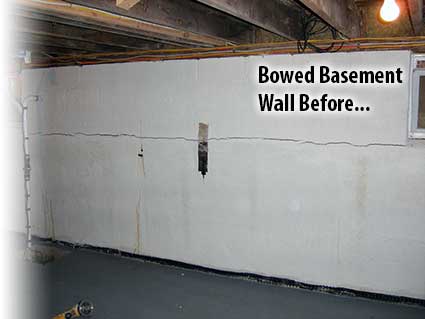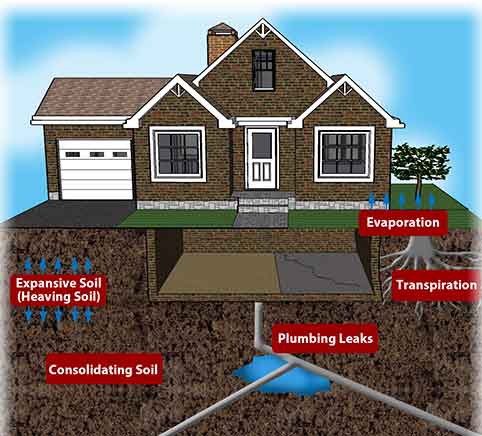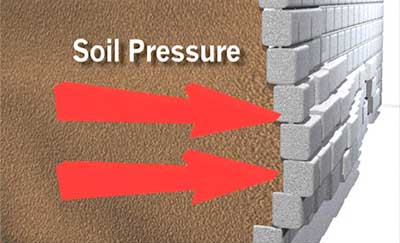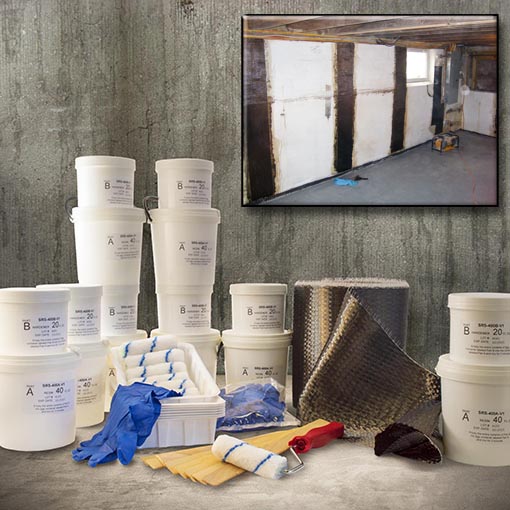When your basement or garage walls bow, a slew of questions generally accompany them. What caused the bowing? What should I do about it? How quickly does it need to be repaired? How serious is it? How much money is this going to cost to repair? Is this something I can handle myself? A bowed wall is often a sign of extensive damage, so repairing it can seem like a daunting task. But armed with the right knowledge and repair solutions, it really doesn’t have to be.
Let’s start with our first question: What caused the bowing in the first place? Bowing walls can occur as a result from a number of different causes. Luckily, there’s a simple repair solution to cure just about all of them. The cost to do so will increase as your bow does, though, so it’s important to get the issue corrected as soon as possible to save your wallet and your home.
External Loads From Driveways or Patios Near Basement Walls
Extra weight from driveways and patios, as well as the people, vehicles, and furniture that often use them, can put additional pressure on the soils beneath and around your home. The compression often forces the soils against your basement walls, exerting more pressure than the wall is used to handling.
Tree Roots Pushing Against Basement Walls
Even if you have a tree or shrub that isn’t placed directly next to your foundation, the plant’s long-growing roots can still exert significant pressure against your basement wall, forcing it to bow inward.
Soil Saturation
When your soil becomes overly-saturated, it takes on additional weight and force that it didn’t have before. Now the soil that was simply resting next to your foundation is actually pushing against it with a strength great enough to destabilize it. Your soil can become saturated from a number of different water sources, including broken pipes, damaged or malfunctioning rain gutters, rain gutters that don’t direct water away from your foundation, a high water table, significant rainfall, or a lawn that slopes towards the home instead of away from it. If you suspect that your bowed wall is a result of soil saturation, there are a number of solutions to reduce the likelihood of future problems by diminishing the saturation levels directly next to your foundation. Refer to my earlier blog, Don’t Let Wet Seasons Water-log Your Foundation for some tips.
Soil Settlement
Soil shifts naturally, so if your foundation footers were initially installed on looser material, they might shift over time as the soil settles beneath the weight of your home. The shifting soil places a lateral force against your wall, forcing it to bow.
Many homes are built on clay soil, which is highly expansive when wet. While the soil expansion itself can cause some damage to your foundation and walls, the real damage comes when that expanded soil dries out and contracts.
What To Do About Your Bowing Walls
No matter what caused your bowed wall, you should take the necessary steps to correct it as soon as possible. StrongHold™’s Bowed Wall Repair Kits are a great solution for each of the catalysts listed above. As long as your wall’s deflection is 2″ or less, StrongHold™ has the engineered strength to reinforce it, ensuring the prevention of any additional damage, at an affordable price to fit your budget.
StrongHold™’s patented carbon fiber fabric is 10 times stronger than steel, and works on any wall. And it’s so easy to install, you can do it yourself! StrongHold™ stops your wall’s bow permanently in just a matter of hours.
For more information about StrongHold™ and how to order it, contact me today at STRsupport@hj3.com.





